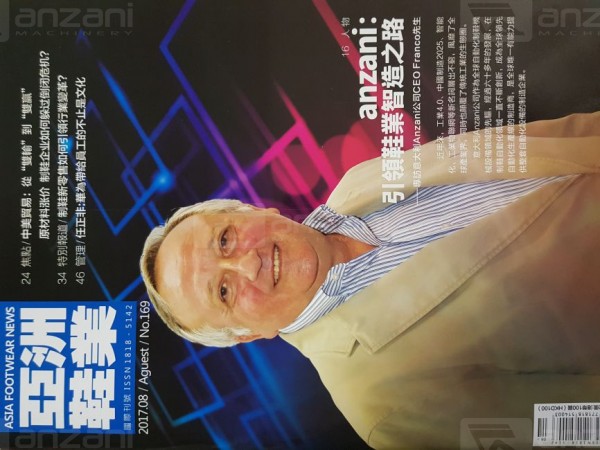
Asian Footwear News 169 Cover
Asian Footwear News has decided to dedicate us the cover of the number 169, with an in-depth article about the progress we are bringing in Asian productions, thanks to the advent of automation. The fact that delocalization is no longer the only answer to the increase in labor costs is underlined, in fact the advantages deriving from automation allow production to be maintained in more developed areas, with consequent exploitation of scale economies and infrastructures, often insufficient in poorly developed areas. Another fundamental point is the constant maintenance of quality and the elimination of certain jobs that are too arduous.
Here below the full translation of the article:
Anzani: shows the road to success in the footwear industry:
In recent years, Industry 4.0, Made in China 2025, intelligentification, IoT and other new terms continue to appear, establishing themselves worldwide in the industrial sector. At the same time the traditional industry system has weakened. When we started to consider that the footwear industry was also a high-intensity industry, then the use of automation in the production of footwear has been progressively increased. As one member of the industry said: a few years ago, there were no entrepreneurs in the footwear industry ready to sit down and listen to a lesson on automation, but now many people take the initiative to get closer and deepen their usefulness. The automation of production is what allows the footwear industry to reach a guaranteed quality, to increase production efficiency, to make the management of industrial plants more effective, and has already allowed the Chinese footwear industry to increase its production capacity. efficiency in production. It should also be noted that this is the only way to reduce labor costs. The Italian company Anzani Machinery acted as a pioneer in the use of mechanical tools for the automation of the footwear industry. Thanks to its 60 years of experience and constant innovation in the field of automation of the footwear industry, it has become a world leader in the automation of production lines of manufacturing companies. Moreover it is the only one in the world to have the ability to guarantee a complete supply of plants for the manufacturing industry. In order to take another step to understand the Anzani company, we have managed to have an exclusive interview with Mr. Franco, CEO of the Italian company Anzani, who will give his opinions and suggestions on the automation of the Chinese footwear industry.
Anzani company history:
The Anzani company was founded in 1953 and at the beginning it was mainly involved in the production of conveyors for the footwear, clothing and leather processing industries. Over time, market competition has become increasingly intense, so in order to meet the needs of the footwear industry and the market, the company Anzani has constantly improved the quality of its products, technological innovation, the process development and technical innovation. Furthermore, the company's research and development department has produced numerous important ideas: rotary warehouses, ie production plants that move in a completely automated way and used for the storage of shapes and components; robotic systems and special transport used for vulcanized shoes, computerization and complete automation of distribution. Alongside all this, there remains an attention and a check on the efficiency of each worker. This technical innovation has not only allowed and will allow significant progress in industrial design in the footwear sector in the future, but will also increase production efficiency. The need for plant development and footwear production remains constant. Over the years, even the types of raw materials of the footwear industry have increased: not only the elastomer and the leather but also PVC, PU, TR, EVA and many other new materials sought by people and used in the production and creation of shoes. For all the aforementioned reasons and for the sixty years of Anzani's experience, the attitude towards development is balanced between tradition and innovation and is accompanied by the assumption of a sense of responsibility in the introduction of new technologies in the market . This policy has allowed the Anzani company to become a pioneer in automation.
Anzani always looking for innovation:
At the Anzani company, every employee conveys his passion for constant improvement. This spirit of dedication to work is the source and strength of a long lasting business success. Just founded, innovation and improvement were in fact defined as the most important values for the company. From the point of view of Mr. Franco, machinery and technology are only a means for the production of shoes, the only thing that matters is the way of thinking about the use of high technology, the idea behind continuous innovation , what inspires the introduction of new technologies in industry and in the market. Mr. Franco said in the interview that the sensitivity towards the market is not only sought among a growing number of customers, but it is what allows us to anticipate any future need. From the main demands of the market and of the customers, we begin to investigate the needs. What is essential to innovate is how to analyze the real needs of the market and customers. The origin of innovation is the market that the industry deals with, which is why innovation is not imagining abstract ideas, nor is it a miraculous flash of genius, but it is necessary to support the requests of customers and market, because only if they can understand their needs in detail, then it will be possible to innovate successfully. As for counterfeiting, Mr. Franco's attitude seems very optimistic, he said, the highly competitive Anzani products compete successfully with other products on the market. The counterfeiters could not only imitate a part, but also the whole product. Despite this, what reassures the Anzani company is that the majority of sales are concentrated on key products, for example: a fully automatic sewing station suitable for clothing, a fully automated module for shoe assembly, automatic conveyor for the production of footwear, an automatic conveyor to use rubber in the production of vulcanized shoes and many other machines.
As far as the Anzani management philosophy is concerned, the priority factor is not to compromise the quality of the products. Mr. Franco said that the company is able to provide customers with the change they want: to reduce the amount of machinery used, to reduce labor costs, to reduce energy consumption and maintenance costs, to promote the improvement of the quality of the equipment. output. As for the need to satisfy customers, they have an approach related to the industrial sector, first of all it is an analysis of customer requests, understand in detail the real needs, examine the technologies in their possession, all this will lead to satisfaction customer requests.
Automation provides customers customized products and services:
The automation of the plants captures the big data, it is "the information" and "the physics" from which the big data emerges. Regarding the foundation of the information in the management of the production of the previous traditional industry, the physical awareness, which was reached through the interconnection of the materials, is what gives rise to the productive dates of the Industry 4.0 era, and the R & D of the industrial sector, production, operations, the market and the models of managment move new steps. These new ideas provide the manufacturing industry with increasing speed, greater efficiency and sharper discernment. Then, as a result of the internet date, we arrived at the autonomous production of monitoring in real time. The production dates are the same in the management process and fast delivery, while they are different from feedback at the center of the production process. The change towards the improvement of the plants allowed the adaptation of the date system and allowed to optimize the industrial production and its management. Furthermore, in the process of plant operation, the natural signs of wear could lead to a change in the quality of the machinery. For this specific reason, the production results deriving from the automation of the plants have immediately led to the decision to use the industry 4.0 and therefore a level of intelligence of the plants equivalent to the needs. As for the customization of consumption needs, there are production models that deviate from traditional production needs, data and information, deriving from consumption needs, have guaranteed a reworking of the responses to customer requests. Thus, through the support of big data, automation could not only meet the needs of the market, but also provide customers with personalized goods and services. At the same time, the analysis of big data on the technological process could substantially reduce energy consumption.
The Chinese footwear industry from Anzani's point of view:
The Anzani machines are the first in the world, the shoes produced with these machines are among the best, and the customers who use the Anzani machines have increased over time and are present all over the world. In the company's 60-year experience, the development of the footwear industry in China and around the world has been characterized by original ideas. From the point of view of Mr. Franco, the world market is dynamic, and at the same time it is mature. From the moment in which the standard of life of people continues to improve, shoes, initially considered only a commodity of necessity, have become symbols of identity and good taste. The function of footwear can no longer be just for protection and heating, but many other functions have been highlighted and this has inevitably led to an increase in the demand for footwear. In the last 20 years, the footwear market in China has undergone a major transformation, and like any business cycle, the Chinese footwear market has also had ups and downs. The speed of growth of the footwear market in China has always aroused much surprise. China is one of the countries with the largest population in the world and the Chinese domestic market has a potentially enormous demand and development capacity. Given the growth of the Chinese population, the improvement in the living standard of the population, the footwear production in China will continue to occupy a dominant position. To face the many challenges, China has had to introduce first-level production facilities, improve production efficiency, produce high-quality footwear, increasingly link the importance of automation in production to national contributions.
Receiving the economic influence of Europe and America, the numerous customers do not bear the steady rise in prices of products in the Chinese footwear industry, so they continue to shift production to countries in Southeast Asia such as Vietnam, Cambodia, Bangladesh , Indonesia, with the aim of reducing costs and safeguarding corporate interests. In addition to Nike and Adidas, other well-known brands in the industry have relocated their production facilities from mainland China to Southeast Asia. In addition, even overseas competition has created a major threat to Chinese footwear production. When asked how he considers this problem, Mr. Franco said: "to face the rapid rise in commodity prices, rising labor costs, it is not strange that many manufacturing companies first start placing automated equipment and then occupy the costs ". But, whether success depends on the industrial chain present in the chosen area, obviously it's not all. In fact, it is not responsible for changes and progress in planning, given that there are differences between the industrial chain of the countries of Southeast Asia and China ". An analysis of the current situation reveals that the countries of Southeast Asia can carry out subcontracts of a lower level, while an increasing number of footwear companies in China are beyond that. The Chinese footwear market is facing a growing number of new challenges. Together with the increase in population and the improvement of the standard of living, consumption ideas also change constantly. The Chinese market has a high quality production and even a demand for the best footwear from around the world. Looking ahead, the Chinese market will focus on raising the quality of footwear, strengthening China's role in global footwear production. So, now as in the future, China will be the production area of the most important luxury footwear in the world In the continuous progress of the company, the footwear sector continues to improve, and to use new technology. Footwear companies want to play a role in the wave of transformations that the industry is undergoing. To avoid being annihilated by the competition, there is only one path to follow, continue to innovate and keep up with the times.
Proposals regarding automation in China:
Although automation is considered an irresistible trend by every company, and at the height of its moment, the process of development of automation in footwear lacks the speed that had previously characterized the spread of mass media. Since every development trend originates from ideas, in order to stimulate every company, to become established all over the world and become real, automation requires a long process. "Energy efficiency and automation are the future of the footwear industry, and it is also the path that Anzani has followed paying attention to the research and development sector". Regarding the future production of footwear, Mr. Franco expressed his point of view, "given the increase in the cost of labor in China, the traditionally labor-intensive footwear industry had to reduce the use of workers , embracing the only solution ie that of automation and improvement of production processes. The distribution to customers previously used by Anzani all over the world gave priority to Europe, America and China. Adidas, Nike have always been excellent partners, in recent years the smart technology of the Anzani machines in the production of sports shoes has achieved wide use with a positive echo. This technology is estimated in the near future to make new progress. In China it is already 10 years since the robotic production line is operational, mainly used for military boots, trecking shoes, safety shoes, and many other shoes. As for the connection with the footwear industry in other countries, the large-scale footwear industry focused on private brands, where the appearance of smart production is very important, and already follows a specific action. Regardless of whether the production with smart is already a reality or not, surely it will be able to create a great diffusion of their production in the next 5-20 years. Differently, a larger number of footwear companies are characterized by a relatively smaller size, and with regard to the many aspects of intelligent production they have little awareness and a lack of understanding.
Moreover, given that the previous production methods still allow these companies to perform in some operations, they have not yet taken substantial actions to adopt automation. It is understandable: in fact, the development phases of the different companies are not homogeneous, they judge the future patterns differently, so the need to adopt strategies and patterns is obviously heterogeneous. Mr. Franco has affirmed, the era of the 4.0 industry is appreciated by the companies, it is not only an expression of the change in the industrial technologies, but it is a revolutionary change in the industrial production. For example, as far as footwear production is concerned, it manifests itself with the immediacy of footwear production, diversification, flexibility, the possibility of reducing the minimum delivery period, the decrease in the accumulation of stocks, logistics, financing. employment costs, insurance of financial flows, and the reduction of risks to the brand. Therefore, the general trends of footwear production can not be interrupted. Although most of today's national footwear production is still in industry 2.0 or 2.5, the arrival of automation in industry 3.0 is a novelty in recent years. in 3-5 years from now, the domestic footwear industry will invest in production with automation, and will have a big explosion. Mr. Franco also claims to have much confidence in the future of the Chinese footwear industry.
Innovation has become the driving force behind the development of the Chinese footwear industry:
Currently, the division of labor in world production is experiencing a change, a momentary development trend. The Chinese footwear production is experiencing a crucial period of transformation, how to get out of it? Innovation is the strength and the driving force behind the development of Chinese footwear production. Only if the trend of change ensures the technological innovation and the innovation of the system for the world's footwear production, will it respond adequately to any kind of challenge. By increasing quality and efficiency and perfecting the mechanism, the deeply rooted contradiction can be resolved, and the creation of a strong country at the production level that will provide strength and support will be achieved. Currently, Chinese footwear production is experiencing a crucial period of transformations and upgrades, on the one hand, the US and EU suggest a re-industrialization, to intensify commercial protectionism; on the other hand, the increase in the advantages of using low costs, in order to maintain positive production activity, has led to changes in the use of capital. The most important are expressed below: First, the advantages and disadvantages of Chinese footwear production. The Chinese footwear industry has many positive aspects: first of all it is complete, having excellent infrastructures, and a strong productive capacity; then it has a huge internal market, improving the efficiency of innovation; and still compared to a developing country, all the Chinese technology and capital have a lot of impact; compared to a developed country, the number of skilled employees has grown, allowing labor costs to fall despite expectations.
At the same time, Chinese footwear production is facing many challenges: labor force costs are increasing rapidly, labor force production efficiency is not high, consolidated costs are high, value added is relatively low; the quality of industrial production is relatively low, lack of famous brands globally; the power of innovation in production is insufficient, technical skills still have enormous differences; the underlying industry is relatively weak, the most important technology comes from the outside; labor-intensive industrial production begins to move abroad; the lack of technology and industry leads to a justified alarm.
Secondly, public policies that correlate manufacturing industry have brought improvements. From a general point of view, public policies regarding manufacturing industry must include some of the following aspects: the first is human policies, such as education and education; the second is support policies for technological innovation, such as encouraging the use of advanced technology, technology transfer and scientific research; the third is the construction of a network of innovation, such as going beyond traditional barriers, intensifying collaboration between the parts of innovation, boosting regional and interregional collaboration;
the fourth is the growth of the market, motivating the achievement of the balance between each factor, such as the reduction of integrated prices, improve overall efficiency; the fifth is a rational division of the market and of governance, strengthening the collaboration between governance and the private sector; the sixth is the strengthening of the rule of law, such as the right to intellectual property, perfecting the standard system and inspections, promoting proper market competition.
At the moment, some Chinese public policies are not yet fully consolidated, in the future, the attention of public policies regarding Chinese footwear production will take a step towards the system and the environment, decreasing the consolidated costs and social costs, and increasing competitiveness international public policy in the footwear sector.
Gallery
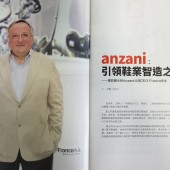
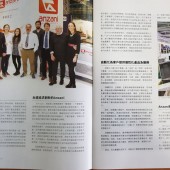
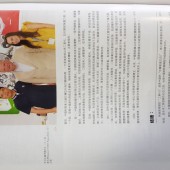
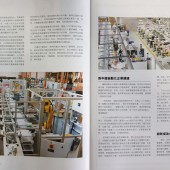
 en
en it
it